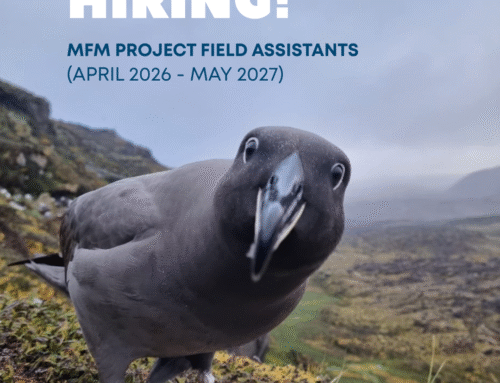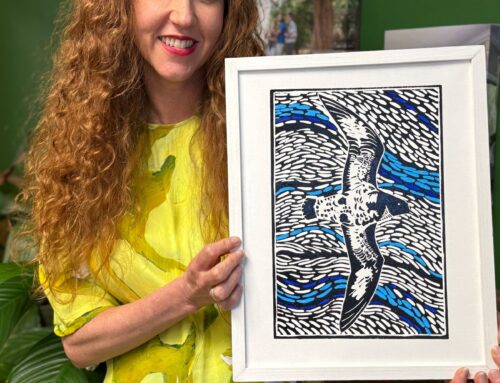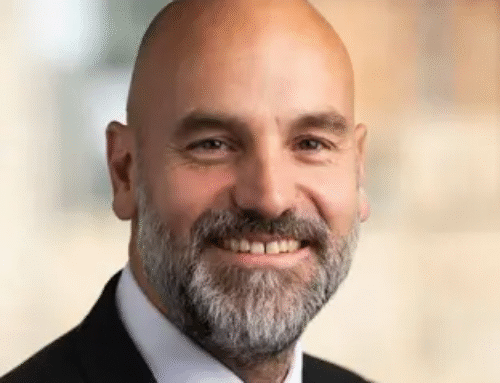Above Picture: The S.A. Agulhas II offshore from Marion Island during the 2022 relief voyage
On 22 May 2022, South Africa’s Antarctic research and supply vessel, the S.A. Agulhas II, returned to Cape Town following its annual relief voyage to Marion Island. The relief voyage provided a valuable opportunity to expand a long-term monitoring programme to assess the ecological outcomes of the planned mouse eradication project. The opportunity was also used to help progress further planning for the Mouse-Free Marion (MFM) Project.
The MFM Project is an initiative aimed at eradicating invasive House Mice from Marion Island, which continue to have a devastating ecological impact on the island. This urgent and ambitious conservation project will prevent the deaths of millions of seabirds, helping to secure a positive future for the iconic Wandering Albatross, the many other seabirds that call the island home, and indeed the ecological integrity of this important sub-Antarctic island.
Over the next year the island-based field work will be carried out by Elsa van Ginkel and Vhuawelo Simba (read about them here), as part of a collaboration between the MFM Project and the University of Pretoria. Elsa and Vhuawelo form part of the 79th Marion Island Overwintering Team and will undertake monitoring of plants and invertebrates towards establishing baseline datasets. These datasets are needed to establish the ecological condition of the island in the presence of mice, prior to their removal. In the future, these pre-eradication baseline datasets will be compared against similar surveys conducted after the eradication operation, thus enabling the ecological changes associated with the removal of mice to be quantified. The plant and invertebrate datasets will be complemented by seabird data that continues to be collected by research teams led by Dr Maëlle Connan (Nelson Mandela University), Prof. Peter Ryan (University of Cape Town) and Dr Azwianewi Makhado (Department of Forestry, Fisheries and the Environment, DFFE) that will collectively form part of a broad longitudinal monitoring mechanism for the project.

Vhuawelo, Elsa, Keith Springer (MFM Operations Manager) and Dr Luis Pertierra (University of Pretoria) sampling near Duiker’s Point, Marion Island
Elsa and Vhuawelo will also undertake bait trials and monitoring of weather conditions to help inform ongoing planning for the baiting operation. The main purpose of the bait trials, which will be conducted with a non-toxic version of the bait, is to investigate its persistence in different habitats and altitudinal zones across the island in the presence of all bait consumers. The primary concern is that if large quantities of bait are consumed by invertebrates, such as introduced slugs, this will reduce the amount of bait available for the mice. Slugs and other invertebrates are not impacted by the rodenticide that will be used in the bait. The outcomes of these trials will help validate the planned baiting strategy, and inform any adjustments that may be warranted to allow for the potential consumption of bait by invertebrates such as introduced slugs. Slugs and other invertebrates are not impacted by the rodenticide that will be used in the bait.
Joining Elsa and Vhuawelo for the takeover period were the MFM Project Manager, Dr Anton Wolfaardt, the MFM Operations Manager, Keith Springer and University of Pretoria researcher, Dr Luis Pertierra. Ntombovuyo (Vuyo) Madlokazi, a member of the MFM Management Committee, also participated in the takeover voyage as a representative of the DFFE management authority for the island.
The three-week takeover period on the island was used by the MFM team for training purposes and to initiate and refine field work protocols. Part of this work involved setting up and testing the use of motion-activated remote cameras (“trail cameras” or “camera traps”) for the bait and cloud monitoring work. A combination of time-lapse images and video footage obtained during the takeover period has provided some useful early insights regarding the persistence of bait in different habitats, the rate at which mice consume the bait and possible interference by slugs. This initial footage has revealed how rapidly mice remove bait pellets from an area, often caching them nearby for later consumption. Although mice were occasionally observed eating the bait pellets in situ, this occurred far less frequently than did mice removing them from the field of view.
The initial footage has revealed that, in areas where slugs are present, they are attracted to the bait pellets, although their presence did not appear to interfere with the consumption of bait by mice. Individual slugs were observed on some bait pellets, but this tended to be a minority of the number of slugs present. In nearly all the nights of camera monitoring, mice removed all the bait pellets before slugs could consume them. On those few nights where mice did not remove all pellets, the remaining pellets were still present the following day. These instances were very early in the trial period, and did not occur once mice were habituated to the daily replenishment of bait pellets.
It is important to note that these are preliminary results from a few areas. The camera trials and other bait monitoring work will be expanded to other sites, representing a range of different habitats, elevations, and time periods, all of which influence the density of mice and slugs.

Setting up a transect to monitor bait persistence, with the Marion Island base in the background
Given the large size of Marion Island, a number of fuel and bait depots will need to be established across the island to maximise the efficiency of the baiting operation. During the takeover period, Keith and Anton had the opportunity to undertake two helicopter reconnaissance flights to identify potential fuel and bait depot sites. This included assessing some potential sites that Keith had identified during a previous (2018) visit to the island as well as searching for additional sites.

Inspecting a potential depot site, near Middelman, Marion Island
Eradicating mice from Marion Island will not be an easy task. However, with meticulous planning, adherence to the lessons learned from other operations and the implementation of best- practice approaches, we know it can be achieved. The work initiated and undertaken during the takeover period forms part of the planning that is required. We look forward to keeping you informed of our progress in these and other activities as we work towards a mouse-free Marion Island. This outcome will not be possible without your continued help and support. One way to get involved and make this project a reality is by sponsoring a hectare or more, or making a gift of any amount, via the project website.
Anton Wolfaardt, Mouse-Free Marion Project Manager, 21 June 2022
The Mouse-Free Marion Project is a registered non-profit company (No. 2020/922433/08) in South Africa, established to eradicate the invasive albatross-killing mice on Marion Island in the Southern Ocean. The project was initiated by BirdLife South Africa and the South African Department of Forestry, Fisheries and the Environment. Upon successful completion, the project will restore the critical breeding habitat of over two million seabirds, many globally threatened, and improve the island’s resilience to a warming climate. For more information or to support the project please visit mousefreemarion.org.











